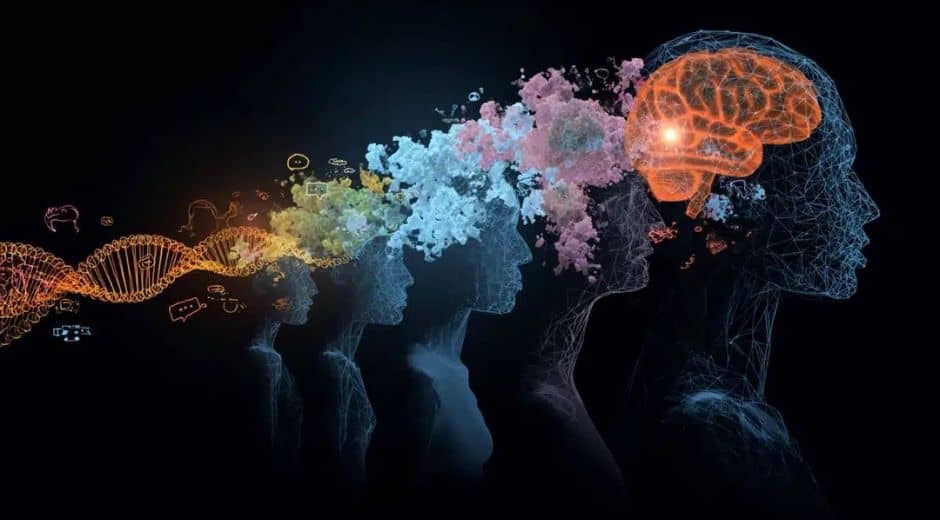The Path to Stability: Strengthening Your Inner Foundation
In a world of unpredictability and rapid change, stability is what keeps the mind anchored. It’s not about control, but about resilience—the quiet ability to stay centered no matter what happens around you. When you nurture stability, you begin to experience life with greater confidence, clarity, and calm.
What Is Mental Stability?
Stability doesn’t mean being unshakable or emotionless. It’s about adaptability and roundedness at once. When your mind is stable, you can process experiences clearly, without being overwhelmed by them. You remain calm under stress, not because life is easy, but because you’ve learned to stand firm within it.
Mental stability grows from awareness and self-regulation. It’s a balance between openness and structure, spontaneity and control. The more balanced your inner world becomes, the more harmonious your outer world feels.
According to Verywell Mind, emotional stability is strongly linked with better decision-making, improved relationships, and overall psychological well-being.
Why Stability Matters for Mind Balance
Without stability, emotions swing wildly. One small event can spiral into stress or anxiety. A stable mind, however, creates distance between you and your reactions. You become an observer of your thoughts instead of a prisoner to them.
When you live with stability, challenges no longer define you. They become experiences you move through instead of obstacles that stop you. This mindset is the foundation of balance and maturity.
Practices That Strengthen Stability
Building stability requires consistent, mindful effort. These small yet powerful rituals can help you cultivate inner steadiness each day:
Morning Stillness
Begin your day with a few minutes of silence. Sit upright, breathe deeply, and feel the ground beneath you. This simple ritual activates presence and starts your day on a balanced note.Structured Routine
A consistent routine creates mental predictability. Set times for meals, work, and rest. A steady rhythm supports emotional stability because it gives the mind a familiar anchor.Grounding Through the Body
When you feel mentally scattered, reconnect with your body. Notice your breath, posture, or heartbeat. Physical awareness restores inner stability quickly.Focused Attention
Give your full attention to one task at a time. Whether it’s reading, cooking, or writing, doing things intentionally strengthens concentration and promotes stability of thought.Evening Reflection
Before sleep, take a moment to acknowledge what went well and what didn’t. Reflecting calmly turns chaos into clarity and reinforces emotional stability.
The Connection Between Stability and Emotional Health
When you practice stability, emotions lose their power to dominate your decisions. You can experience sadness without sinking, anger without aggression, and excitement without losing focus.
Stability gives space between stimulus and response. Within that space lies choice. And choice is freedom. The more often you return to this centered state, the stronger it becomes.
This emotional discipline doesn’t mean you suppress feelings—it means you honor them from a grounded place. Through stability, you gain mastery over your inner weather.
Stability in a Distracted World
Modern life makes stability challenging. Notifications, noise, and multitasking pull the mind in every direction. Over time, this weakens focus and increases anxiety. The antidote is intentional simplicity.
Turn off unnecessary alerts. Spend moments each day in silence. Let your attention rest fully on one experience at a time. These pauses are where stability regenerates.
If you’d like guided techniques and practical tools to support a balanced mindset, you can explore resources on Zoopora.
How Stability Shapes Relationships
A stable mind supports healthy relationships. When you cultivate stability, you respond instead of react. You listen with patience and communicate with clarity.
Instead of letting mood dictate conversation, you bring calm presence. People feel safer around those who radiate steadiness, because your stability becomes contagious. It sets a tone of trust and peace.
Physical Health and Stability
Your mental state is deeply influenced by your body. Sleep, nutrition, and movement all contribute to stability. When your body feels balanced, your thoughts naturally settle.
Simple habits—hydration, stretching, regular rest—are acts of self-respect that maintain internal stability. A stable lifestyle isn’t restrictive; it’s supportive. It allows you to thrive instead of merely cope.
For more related insights on body–mind connection and holistic balance, visit FocusMindFlow.
The Deeper Meaning of Stability
At a spiritual level, stability is rooted in presence. It’s the still point inside you that remains untouched by external turbulence. When you rest in that center, life becomes lighter.
Challenges still arise, but you meet them differently. You no longer rush to fix or resist; you simply stay steady and act with intention. Over time, this centered awareness becomes your default state.
Through stability, you learn that peace doesn’t come from perfect circumstances but from inner strength.
Conclusion: Returning to the Center
Stability is both a practice and a state of being. It’s the foundation upon which true balance is built. When you nurture it daily—through breath, rhythm, and reflection—you cultivate an unshakeable calm.
Even when life feels uncertain, your inner foundation holds. This is the heart of mind balance: steadiness amidst motion, peace within progress.
As you walk through your day, remember that every mindful breath is a return to stability, a reminder that the power to feel centered has always been within you.
In a world overflowing with noise, messages, and endless distractions, has become one of the rarest and most valuable skills. It’s the quiet force behind creativity, productivity, and peace. When the mind learns to stay centered, everything feels more vivid, purposeful, and connected. This is the essence of focus rituals: intentional actions that strengthen your ability to direct your attention where it truly matters.
What Is Concentration and Why Does It Matter?
Is more than just focus. It’s the refined art of bringing all your mental energy to a single point. When you concentrate, your thoughts align, your breathing slows, and your inner chatter fades. The mind becomes still but alert, like a calm lake reflecting everything clearly.
Without it , even the simplest tasks become fragmented. You jump from one idea to another, never fully completing what you started. But with it, time stretches. You feel in control, grounded, and capable of deep thought and creativity.
According to research shared by Headspace, regular mindfulness and attention practices enhance the brain’s ability to sustain it and resist impulsive distractions. This mental strength doesn’t just improve productivity—it transforms how you live.
Creating Daily Focus Rituals
Focus rituals are the foundation of mental clarity. They’re small, consistent habits that guide your attention inward. You don’t need hours of meditation or a silent retreat to strengthen it. What you need is rhythm, intention, and consistency.
Here are some powerful focus rituals to build into your day:
Morning Stillness
Begin each day by sitting quietly for a few minutes before reaching for your phone. Close your eyes and focus on your breath. This small ritual creates a mental boundary between rest and activity, grounding your mind before the day begins.Single-Task Blocks
Choose one task and commit to it fully for 25 to 40 minutes. No switching tabs, no checking notifications. When your mind wanders, gently bring it back. This trains your mental muscles in sustained.Ritualized Breaks
Instead of random pauses, take mindful breaks. Stretch, walk, or simply breathe. These mini-rituals help your brain reset, maintaining high levels of concentration throughout the day.Sensory Anchors
Use the senses to anchor focus. Light a specific candle, play soft instrumental music, or hold a calming object. Over time, these sensory cues signal your brain that it’s time to focus.Evening Closure
End the day with reflection. Ask yourself: Where did I lose focus today? Where did I maintain it? Awareness of these patterns strengthens future concentration.
How Concentration Shapes Emotional Stability
When your mind learns to stay focused, emotional storms lose their grip. A wandering mind easily falls into anxiety and overthinking. But through it , you cultivate a sense of stability. You become less reactive, more present, and better able to understand what truly matters.
By mastering it, you discover that clarity doesn’t come from control—it comes from stillness. You can witness emotions without being swept away by them. This stability becomes a source of quiet power in relationships, work, and self-understanding.
Breaking Free from Distraction
Distraction is not just a modern inconvenience, it’s a habit. Every time you shift attention impulsively, you reinforce mental restlessness. Rituals that strengthen it help rewire this habit.
Start with digital boundaries. Silence notifications, set screen limits, and dedicate specific time for online browsing. When you consciously control your attention, you stop letting technology control you.
For more insight into focus-enhancing habits and mindful productivity, visit GamingNewsHead. You’ll find practical guides designed to help you rebuild your mental discipline with ease.
The Physical Connection: Body and Concentration
Your body influences your focus more than you realize. Nutrition, posture, and movement all shape the quality of your attention. A slouched position or poor breathing pattern weakens concentration, while mindful posture and steady breath enhance it.
Try this quick ritual: sit upright, take three deep breaths, and bring your attention to your physical sensations. As your body becomes still, your mind follows. Repeating this practice regularly forms a strong body-mind connection that supports continuous concentration.
Concentration in Creative Work
Artists, writers, and musicians often speak about moments when time disappears and creativity flows effortlessly. These are states of deep concentration, where self-consciousness fades, and expression becomes natural.
To access this state, remove friction before you begin. Organize your workspace, silence your phone, and start with a clear intention. Once your mind feels undistracted, creativity blooms.
Even short bursts of pure concentration can produce better results than hours of scattered effort. Quality always beats quantity when attention is fully engaged.
Inner Rituals for Long-Term Focus
Over time, focus rituals evolve from small actions into a lifestyle. They remind you that concentration is not something you do, but something you become.
Consider integrating these deeper practices into your daily rhythm:
Digital Silence Hour: One hour each day with no screens. Use it to walk, reflect, or simply be.
Mindful Reading: Read slowly, with full attention on every word.
Creative Morning: Dedicate 10 minutes every morning to creative work before anything else.
Evening Gratitude: Review the moments you felt truly focused during the day.
Small steps, done daily, lead to lasting transformation.
Internal Stillness and the Power of Concentration
At its core, concentration teaches presence. It brings the mind back from distraction and settles it in the now. When practiced long enough, it becomes a portal to peace.
You start noticing that behind the noise of thoughts, there’s a quiet space that never changes. That’s where your true strength lies. When you anchor your attention there, even the busiest day feels spacious.
For more mindful living resources and articles on personal transformation, visit FocusMindFlow. The journey of focus begins with a single breath and deepens every time you return to what truly matters.
Conclusion: The Return to Clarity
Concentration is not about rigid control but gentle awareness. It’s about choosing where your energy flows and protecting that choice with consistency. Each focus ritual you build adds strength to your attention.
When the mind becomes steady, life becomes simpler. Tasks feel lighter, creativity feels natural, and your sense of time expands. Concentration opens the door to calm, clear, and conscious living—the essence of inner mastery.
Focus Flow Forward

Grounding Techniques for a Balanced Mind
Grounding Techniques for a Balanced Mind

Stillness as a Path to Inner Awareness
Stillness as a Path to Inner Awareness

The Power of Alignment: Flowing in Harmony with Yourself
Learn how alignment helps you reconnect with your true self, find balance between mind and action, and live in a state of natural inner flow.

The Path to Stability: Strengthening Your Inner Foundation
Explore how cultivating stability in your thoughts, emotions, and routines builds mental balance, clarity, and peace in a fast-changing world.













